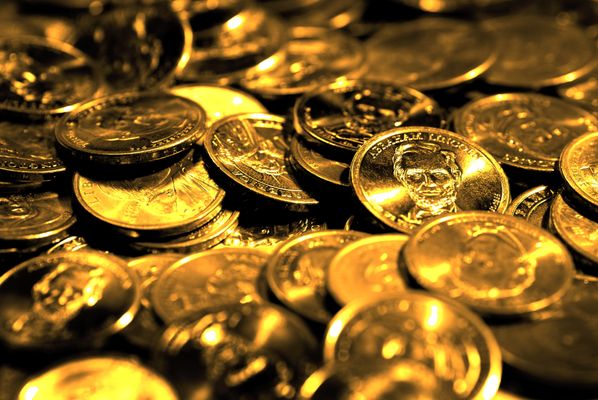3.4.2
Globalisation
Identity and Globalisation
Identity and Globalisation
The creation of identity in a globalised media saturated consumer society.


Baudrillard
Baudrillard
- Baudrillard argued that we live in a media saturated society and globalisation has created a more complex and fluid world, marked by continual change and cultural diversity.
- Global media, globalised consumer products, global brands and chain stores, along with increased migration generate more diverse globalised local communities.


Glocalisation
Glocalisation
- The local and the global are becoming permanently interconnected through ‘glocalisation’, where local products are adapted from local communities.
- Strinati suggests that globalised media and popular culture create pressures to consume.
- This shapes consumer choices through bombarding the public with images, logos and brands.


Identity kits
Identity kits
- These products are what Bauman and May call ‘do-it-yourself identity kits’, essentially shopping for identities through the purchase of consumer goods.


Postmodernism
Postmodernism
- In postmodern consumer society, the structural influences on identity (e.g. class, gender and ethnicity) are no longer relevant, leading Bradley to argue that globalisation has created new multiple hybrid identities.
- Bauman argued that life has become a shopping mall where people can stroll and choose from an ever changing choice of identities.
Freedom of Choice in the Adoption of Identity
Freedom of Choice in the Adoption of Identity
Postmodernists believe that people are free to choose their own identity and adopt any lifestyle through consumer and leisure choices, but this ignores important factors which limit choice.


Occupation and class
Occupation and class
- Working life and occupation greatly limit people’s ability to choose their own identity due to the time and financial restrictions that can result.
- Social class and the unequal distribution of wealth and income mean that only the well off members of society have real consumer choice and the means to ‘shop’ for their identities.


Age
Age
- Age is another factor that postmodernists have failed to consider.
- Young people are better placed to choose their own identities through participation in leisure based consumer lifestyles (e.g. pubs, clubs and concerts). But even here, age-related laws and income can limit choice.


Family life cycle
Family life cycle
- The family life cycle also plays a role.
- Younger couples might be restricted in their choices through raising children and the costs of rent and mortgages.
- Similarly, the retired population may be restricted by poor health and limited income.


Ethnicity
Ethnicity
- Differences in ethnicity mean that people may well make choices in accordance within the norms and values and culturally defines roles of their ethnic group.
- Some may find their activities restricted by racism.


Corporate control
Corporate control
- Marxists (e.g. Clarke and Critcher) argue that large corporations control and manipulate people’s choices of consumer spending and leisure activities.
1Theory & Methods
1.1Sociological Theories
1.2Sociological Methods
2Education with Methods in Context
2.1Role & Function of the Education System
2.2Educational Achievement
2.3Relationships & Processes Within Schools
3Option 1: Culture & Identity
3.1Conceptions of Culture
3.2Identity & Socialisation
3.3Social Identity
3.4Production, Consumption & Globalisation
4Option 1: Families & Households
4.1Families & Households
4.2Changing Patterns
4.3The Symmetrical Family
4.4Children & Childhood
5Option 1: Health
5.1Social Constructions
5.2Social Distribution of Healthcare
5.3Provision & Access to Healthcare
5.4Mental Health
6Option 1: Work, Poverty & Welfare
6.1Poverty & Wealth
7Option 2: Beliefs in Society
7.1Ideology, Science & Religion
7.2Religious Movements
7.3Society & Religion
8Option 2: Global Development
8.1Development, Underdevelopment & Global Inequality
8.2Globalisation & Global Organisations
8.3Aid, Trade, Industrialisation, Urbanisation
9Option 2: The Media
9.1Contemporary Media
9.2Media Representations
10Crime & Deviance
10.1Crime & Society
10.2Social Distribution of Crime
Jump to other topics
1Theory & Methods
1.1Sociological Theories
1.2Sociological Methods
2Education with Methods in Context
2.1Role & Function of the Education System
2.2Educational Achievement
2.3Relationships & Processes Within Schools
3Option 1: Culture & Identity
3.1Conceptions of Culture
3.2Identity & Socialisation
3.3Social Identity
3.4Production, Consumption & Globalisation
4Option 1: Families & Households
4.1Families & Households
4.2Changing Patterns
4.3The Symmetrical Family
4.4Children & Childhood
5Option 1: Health
5.1Social Constructions
5.2Social Distribution of Healthcare
5.3Provision & Access to Healthcare
5.4Mental Health
6Option 1: Work, Poverty & Welfare
6.1Poverty & Wealth
7Option 2: Beliefs in Society
7.1Ideology, Science & Religion
7.2Religious Movements
7.3Society & Religion
8Option 2: Global Development
8.1Development, Underdevelopment & Global Inequality
8.2Globalisation & Global Organisations
8.3Aid, Trade, Industrialisation, Urbanisation
9Option 2: The Media
9.1Contemporary Media
9.2Media Representations
10Crime & Deviance
10.1Crime & Society
10.2Social Distribution of Crime
Unlock your full potential with Seneca Premium
Unlimited access to 10,000+ open-ended exam questions
Mini-mock exams based on your study history
Unlock 800+ premium courses & e-books
